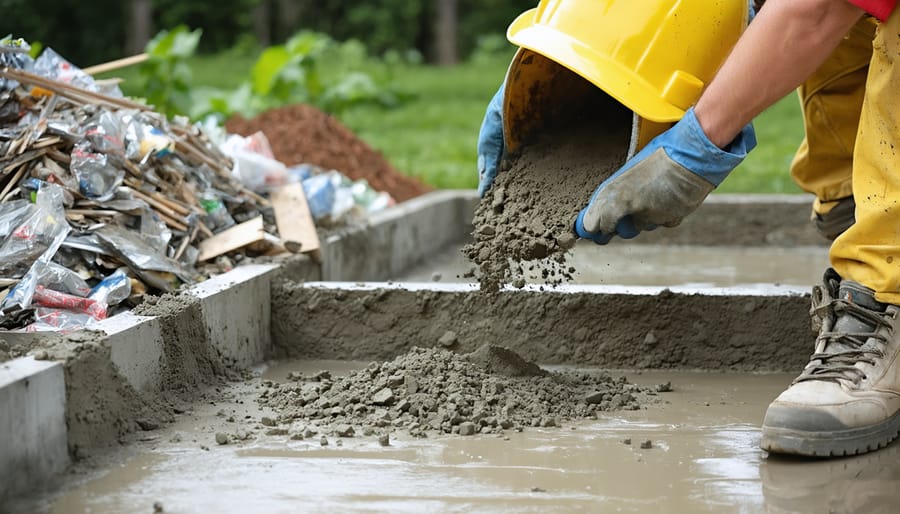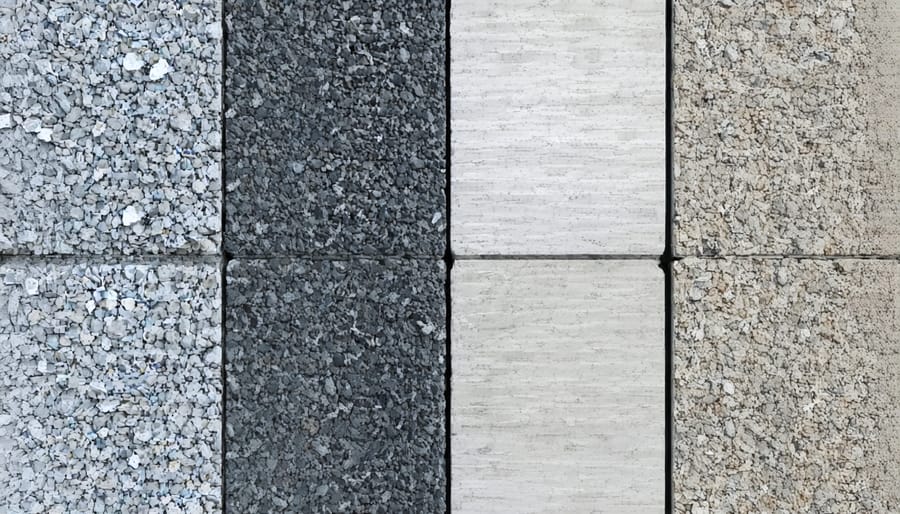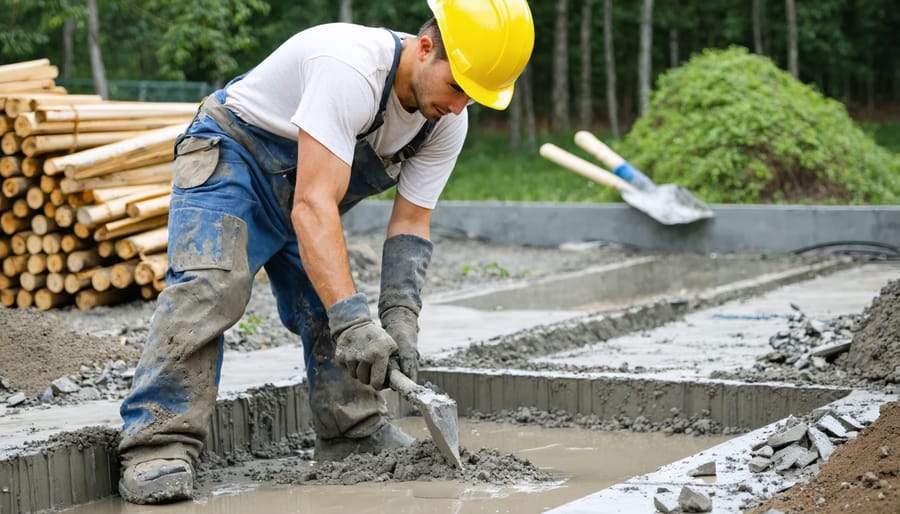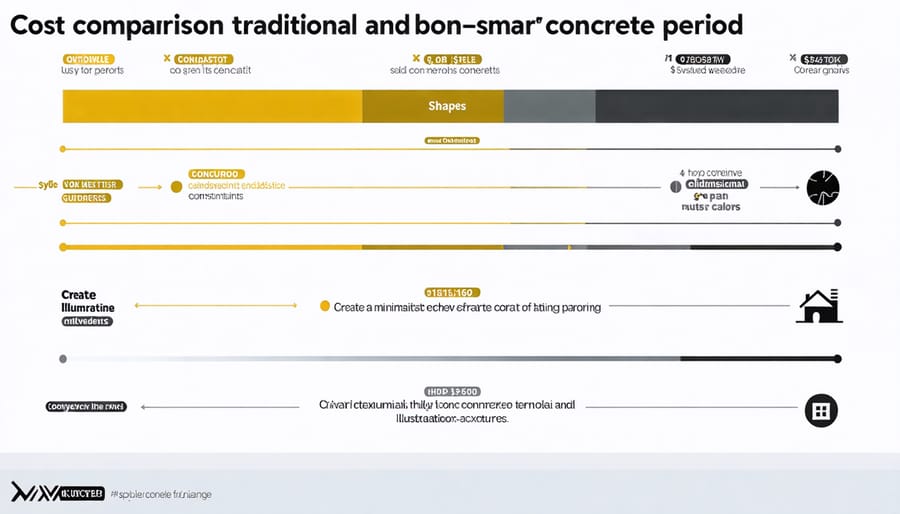Build a Greener Shed: How Carbon-Smart Concrete Cuts Your Environmental Impact

Transform your next construction project with innovative concrete solutions that slash carbon emissions while maintaining superior strength. As one of the most promising eco-friendly building materials, carbon-reduced concrete incorporates recycled aggregates, alternative cementitious materials, and carbon-capturing technologies to reduce environmental impact by up to 50%. This revolutionary material represents a significant shift in sustainable construction, offering homeowners and DIY enthusiasts the perfect balance between durability and environmental responsibility. Whether you’re building a storage shed or tackling a larger project, carbon footprint concrete delivers the same trusted performance as traditional concrete while helping combat climate change – all without compromising on cost or quality. Recent advancements in mix designs and manufacturing processes have made this green building solution more accessible than ever for residential applications.
Understanding Carbon Footprint Concrete
Traditional vs. Low-Carbon Concrete
Traditional concrete relies heavily on Portland cement, which accounts for about 8% of global CO2 emissions during production. In comparison, low-carbon concrete incorporates alternative materials that significantly reduce environmental impact while maintaining structural integrity.
The key difference lies in the ingredients. Conventional concrete typically contains Portland cement, water, and aggregates. Low-carbon alternatives replace portions of cement with supplementary materials like fly ash, slag, or silica fume. These materials are often byproducts from other industries, making them environmentally beneficial in two ways: reducing cement usage and repurposing what would otherwise be waste.
For example, a standard concrete mix might contain 15% cement, while an eco-friendly version could reduce this to 7-10% by incorporating recycled materials. Some innovative low-carbon mixes even use carbon-capturing aggregates that absorb CO2 throughout their lifetime.
The appearance and performance of both types remain similar, with low-carbon options sometimes offering enhanced durability. While traditional concrete has a proven track record, eco-friendly alternatives are gaining popularity as environmental awareness grows and technology improves.

Environmental Benefits
Using carbon footprint concrete in your shed construction offers significant environmental advantages that go beyond just storing your belongings. This eco-friendly material actively reduces greenhouse gas emissions by capturing and storing CO2 during the manufacturing process. A typical shed built with carbon footprint concrete can sequester as much carbon as 50 mature trees absorb in a year.
The production of this innovative concrete uses up to 30% less energy compared to traditional concrete mixing methods, helping to minimize the overall environmental impact of your construction project. It’s also worth noting that this material often incorporates recycled components, such as fly ash and slag, which would otherwise end up in landfills.
Additionally, carbon footprint concrete is incredibly durable, meaning fewer repairs and replacements over time. This longevity translates to reduced resource consumption and waste in the long run. The material’s thermal properties also help regulate temperature inside your shed more effectively, potentially reducing the need for additional climate control measures.
For environmentally conscious homeowners, choosing carbon footprint concrete represents a practical way to contribute to sustainability while building a lasting storage solution.
Practical Applications in Shed Construction
Foundation Options
When planning your eco-friendly storage solution, several shed foundation options can help minimize your environmental impact. One popular choice is using recycled concrete aggregate (RCA) blocks, which repurpose demolished concrete into new foundation materials. These blocks provide excellent stability while giving construction waste a second life.
Another environmentally conscious option is pervious concrete, which allows water to seep through naturally, reducing runoff and helping maintain groundwater levels. This type of foundation works particularly well in areas with drainage concerns.
For smaller sheds, consider using precast concrete pier blocks made with low-carbon cement alternatives. These blocks can be easily positioned and require minimal site preparation, reducing both labor and material waste. They’re particularly effective when paired with pressure-treated wooden skids.
Alternatively, you might opt for a floating foundation using eco-concrete slabs. These incorporate sustainable materials like fly ash or slag cement, which significantly reduce the carbon footprint while maintaining structural integrity. This option works well for level sites and provides excellent moisture protection for your shed.

Installation Tips
When working with carbon footprint concrete, proper installation is crucial for optimal performance and environmental benefits. Start by ensuring your work area is clean and level, as this helps achieve even distribution and proper curing. Mix the eco-friendly concrete according to manufacturer specifications, typically using cooler water to allow adequate working time.
For best results, pour the concrete in sections rather than all at once, especially for larger areas. This method helps prevent cracking and ensures thorough compaction. Use a vibrating tool to remove air pockets, which can compromise strength and durability. Keep the concrete consistently moist during the first week of curing – this is particularly important for low-carbon mixes as they may require more attention during the curing process.
Weather conditions significantly impact installation success. Avoid pouring during extreme temperatures or heavy rain. If working in hot weather, consider using sunshades or working during cooler hours. For cold weather installation, use appropriate insulation methods to protect the concrete while it cures.
Remember to apply an eco-friendly sealer once fully cured to enhance durability and reduce maintenance needs over time.
Cost Considerations and Long-Term Value
Initial Costs vs. Traditional Concrete
When comparing costs, carbon footprint concrete typically comes with a 15-25% higher initial investment than traditional concrete. For a standard shed foundation, this might mean paying $600-800 instead of $500-650. However, many homeowners find this cost difference manageable when considering the long-term environmental benefits. Some areas offer green building incentives that can help offset these expenses, and certain manufacturers provide competitive pricing packages for residential projects. It’s worth noting that as sustainable building materials become more mainstream, prices continue to trend downward, making eco-friendly concrete options increasingly accessible for the average homeowner.

Long-Term Benefits
Carbon footprint concrete proves to be a smart investment that pays dividends well into the future. Its exceptional durability means your shed’s foundation and walls will require minimal maintenance, potentially lasting decades longer than traditional concrete structures. These long-term sustainability benefits translate into significant cost savings, as you’ll spend less on repairs and replacements over time. The material’s thermal properties also contribute to better temperature regulation, potentially reducing your shed’s heating and cooling needs. Additionally, as environmental regulations become stricter, buildings using eco-friendly materials may increase in value, making your green choice a financially sound one for years to come. The initial investment in carbon footprint concrete can be recouped through these lasting advantages, making it an excellent choice for forward-thinking homeowners.
Making environmentally conscious choices in shed construction doesn’t mean compromising on quality or durability. By opting for low-carbon concrete alternatives and sustainable building practices, you’re not just creating a storage solution – you’re contributing to a greener future. These eco-friendly concrete options offer comparable strength and longevity while significantly reducing your project’s environmental impact. Remember that every sustainable choice, no matter how small, makes a difference. Whether you’re planning a new shed or upgrading an existing one, consider the long-term benefits of environmentally responsible materials. Your choice today helps create a more sustainable tomorrow, proving that practical storage solutions and environmental stewardship can go hand in hand. Take the first step toward greener construction by exploring these innovative concrete alternatives for your next shed project.

